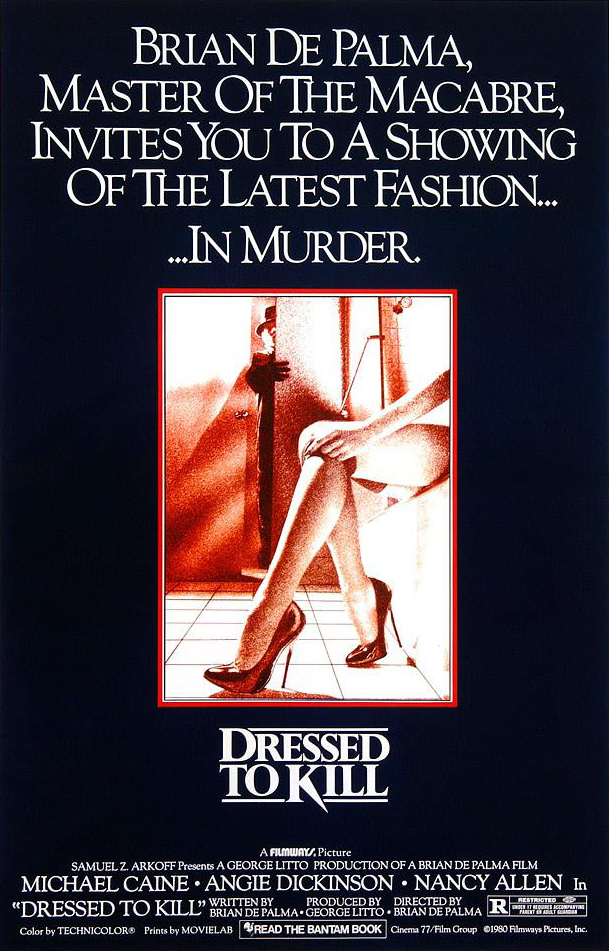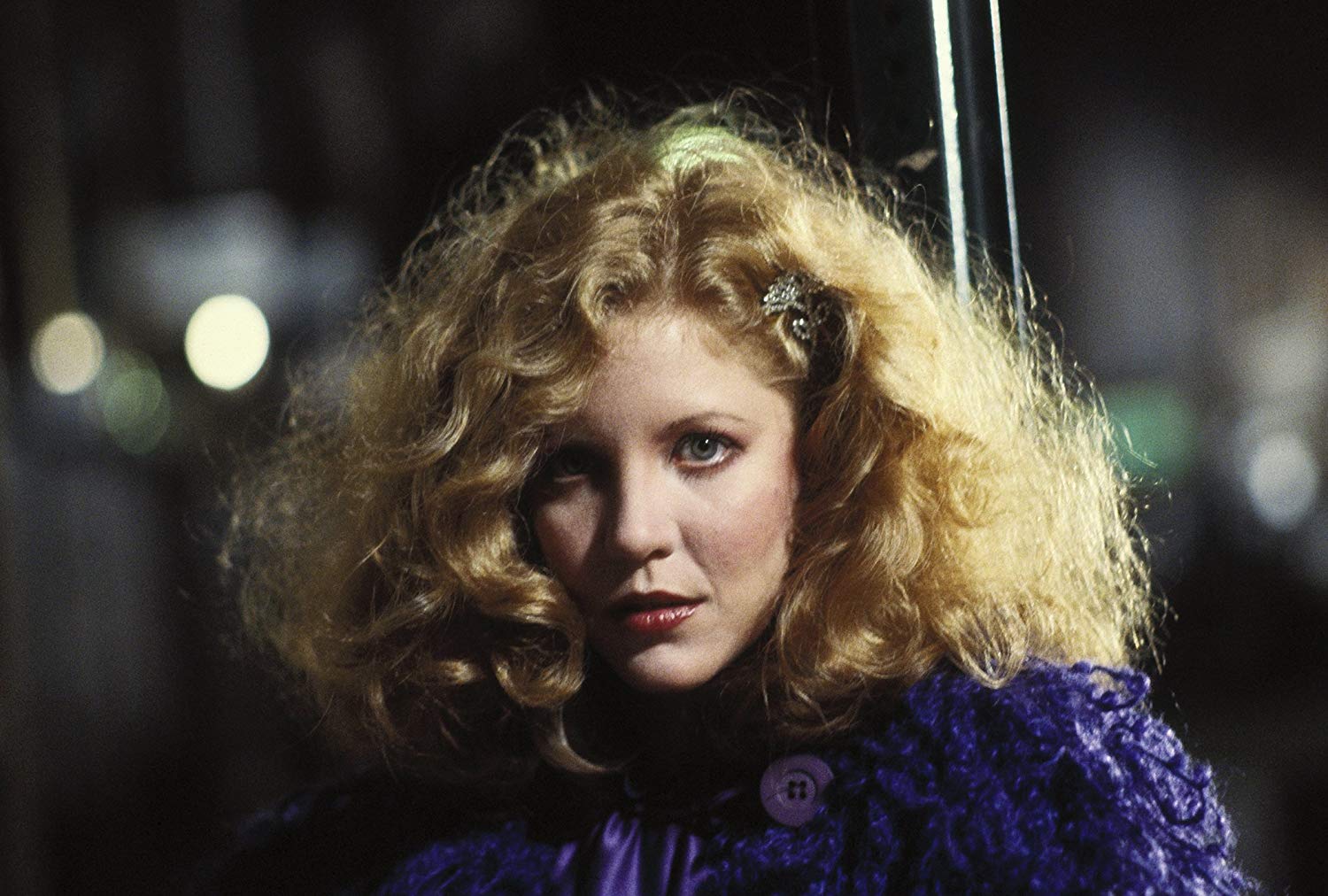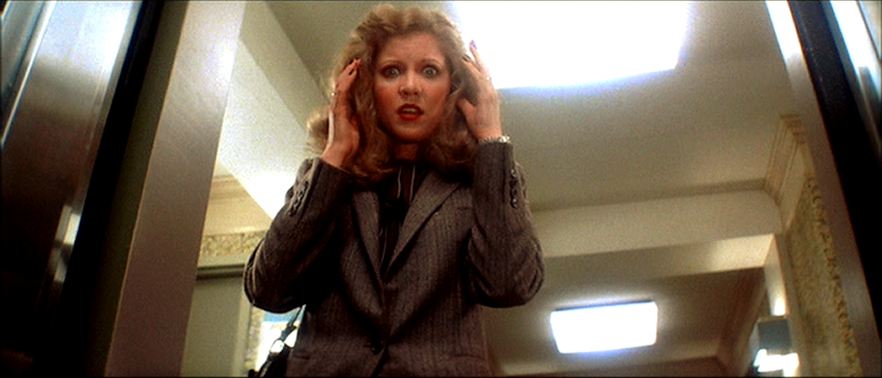Summary
After a call girl witnesses a murder, she becomes the next target of the murderer.
My Thoughts
I became rather intrigued with De Palma after watching “Blow Out” (1981) and one of my friends, who is a De Palma enthusiast, recommended “Dressed to Kill” based on my love for the former. De Palma’s earlier films are, in my opinion, far more interesting than some of his more famous later works like “Scarface” or “The Untouchables”. “Dressed To Kill” feels to me like a Hitchcock film with a dash of Dario Argento; it’s meticulously and artfully directed, but it contains scenes of sudden shocking, bloody violence and, at times, gratuitous sex. It feels like a high-class Gialo film in the best way possible.
(SOME SPOILERS IN THE FOLLOWING PARAGRAPH)
Kate Miller (Angie Dickinson, “Point Blank”) is a sexually frustrated housewife living in New York City. She talks to her psychologist, Doctor Robert Elliot (Michael Caine, “Batman Begins”) about her frustrations and even makes an advance on him, which he graciously refuses. Kate goes to an art museum where she meets a man with whom she has sex, and shortly after, she is murdered. Liz Blake (Nancy Allen, “Robocop”), a high-class call girl, is the only witness to the murder, and the murderer then sets their sites on Liz.
(SPOILERS END)
There’s a lot of things that I really liked about this film, but I’d be remised if I didn’t mention some of the things that would probably detract a lot of our readers from watching this. First and foremost, this being a Christian site, I feel like I should mention that there is a decent amount of sexual material in this film. The first scene is Kate in the shower imagining a rape fantasy, and the second scene is Kate and her husband having sex, and her being unsatisfied by it. It’s a rather racy way to start the film, but it keeps on going from there. There’s another sex scene in the back of a cab, and plenty of sexually-charged dialogue throughout. The film by no means is as graphic as movies like “Shame” (2011) or “Nymphomaniac Part I” (2013), but it does contain enough material that I’d feel weird not mentioning it.
The best part of this film is its director. De Palma is a strange director to follow because he’s all over the map as far as genre goes. He’s did the strange pseudo-horror musical, “Phantom of the Paradise” (1974); “Carrie” (1976) was straight horror; “Scarface” (1983), “Untouchables” (1987), and “Carlito’s Way” (1993) are gangster films; “Mission: Impossible” (1996) is action; Mission to Mars (2000) is sci-fi; and then he’s got stuff like this and “Blow Out” that are pseudo-Hitchcockian thrillers. Talk about a varied filmography. The thing is, he’s usually able to pull off whatever he’s trying to do. In this film, his directing and attention to detail elevate this slightly sleazy story from b-movie trash to an enjoyable, stylish ride. There are clear homages to Hitchcock in this film, most obviously in the Art Museum, which feels incredibly similar to some scenes from “Vertigo” (1958). But there are other, subtler Hitchcockian nods and twists along the way too: (SPOILER) killing off Kate about halfway through the film and then focusing on an entirely different character feels remarkably like “Psycho” (1960) and killing off Janet Leigh’s character, Marion Crane. Subverting your expectations like the way De Palma does in this film keeps the viewer engaged and guessing. (SPOILER ENDS)
The cinematography in this movie is pretty top notch too. I’m going to go back to the Art Museum scene again because that was one of my favorite scenes in the whole movie, but in that scene there is a whole story told without any dialogue: just visual storytelling. It’s fantastic. We watch as Kate scours the Art Museum for someone to catch her eye. At first she only sits on a bench until a man sits next to her, then the two engage in a kind of dance/chase, following each other from one room to the next. It’s beautifully shot and exquisitely directed.
The twist near the end is a little schlocky, but it fits the tone of the film perfectly. I actually think the twist, which is a little out in left field, elevated the movie higher in my book. It’s a self-aware thriller. It knows quite well that it is a b-movie premise, but the director is so intent on crafting something that is Grade-A that the film works tremendously well.
Verdict
While I certainly can’t recommend this movie to everyone I would recommend it to people who enjoy grittier thrillers or don’t have qualms with sexual content in films. I still think I liked “Blow Out” more than this, but this was still wonderfully unique. If you do like this film, then I’d also recommend Argento's thriller “Deep Red” (1975), which I kept thinking of throughout this film, particularly after the murder scene in the middle. De Palma is almost always a safe bet, and this is another solid entry for him.
Review Written By:





